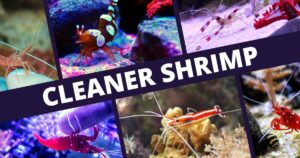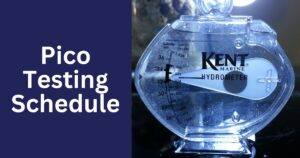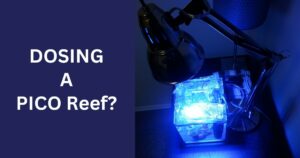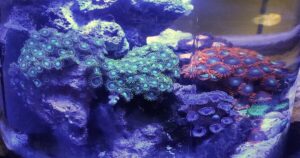I’ve found that introducing crabs to my reef tank can be a balancing act. Each species, from the algae-munching Emerald to the ornate Pom Pom, plays its part in the ecosystem, but it’s important to match their habits with your tank’s needs and inhabitants.
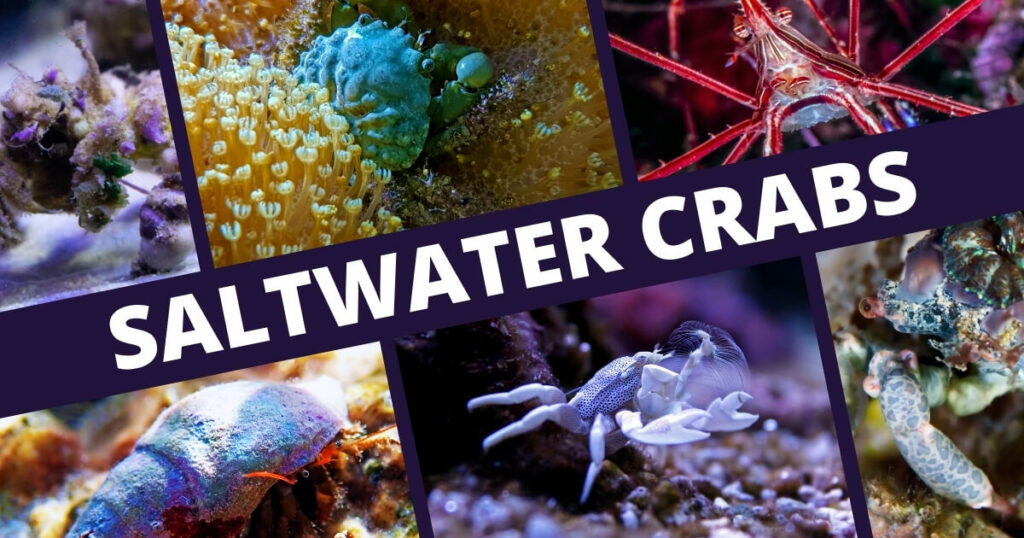
With some planning, these fascinating creatures can thrive in your care, contributing to your reef tank’s health and display. Here are 8 crabs to consider adding to your reef tank and what to watch out for.
Hermit Crabs
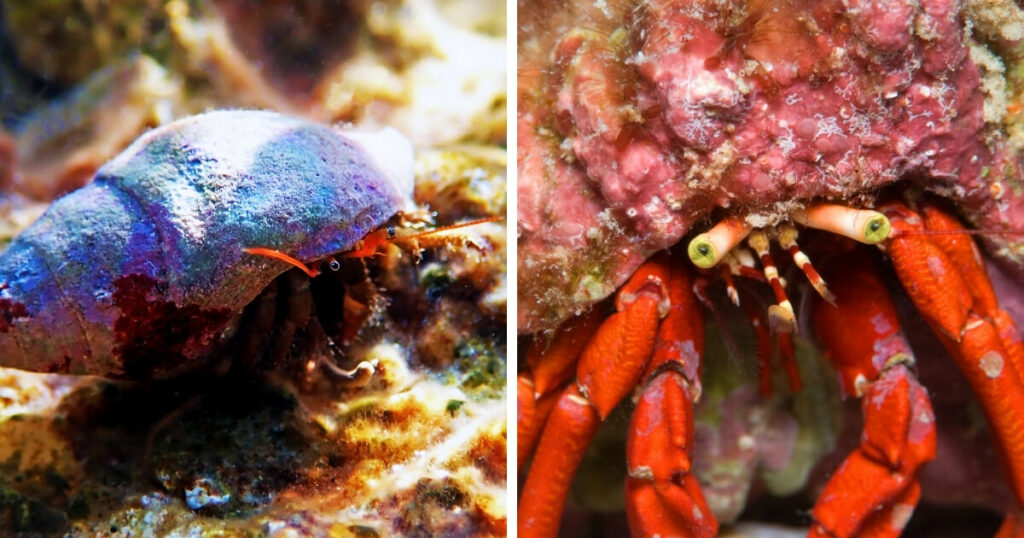
Hermit crabs are known for their role as scavengers, feasting on detritus and leftover food, which helps keep the tank clean. However, they may also disturb smaller snails or climb over corals, potentially causing stress to these tank mates.
- Reef Safe: Yes – With caution, as they might topple corals or bother other invertebrates.
- Size: Up to 4″, depending on the species
- Best For: Detritus removal and general cleanup
- Types: Most common are Scarlet Reef Hermit (Paguristes cadenati) and Blue Leg Hermit Crab (Clibanarius tricolor)
- Care Level: Beginner
Porcelain Crabs
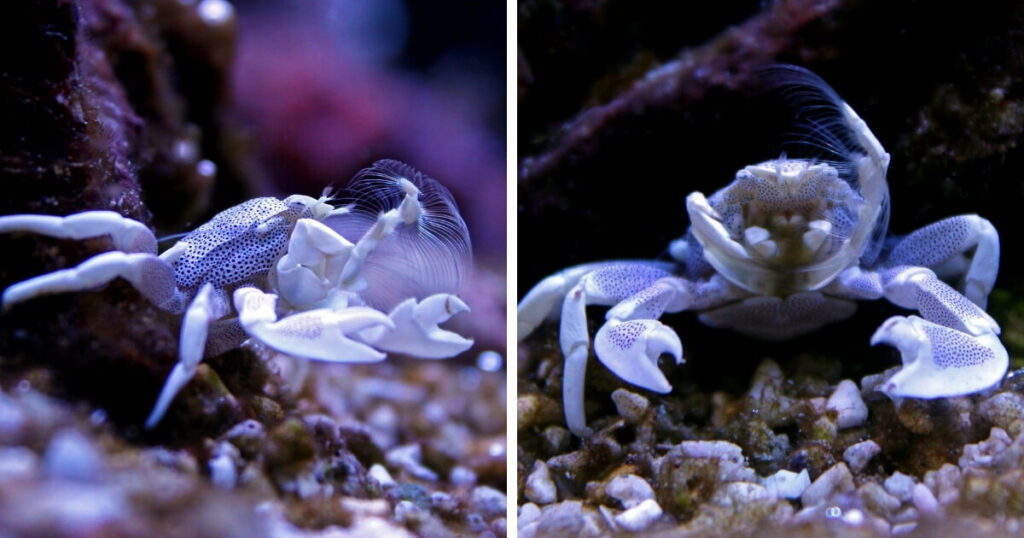
Porcelain crabs are filter feeders known for their delicate, fan-like appendages that sweep the water for suspended food particles. They have a tendency to hide and need stable rockwork as they can be quite fragile.
- Reef Safe: Yes – They coexist peacefully in reef tanks without harming corals or other tank mates.
- Size: Up to 2″
- Best For: Visual appeal and minor supplement to water filtration
- Types: Broad-clawed Porcelain Crab (Porcellana platycheles), Blue Porcelain Crab (Petrolisthes galathinus)
- Care Level: Beginner
Emerald Crabs
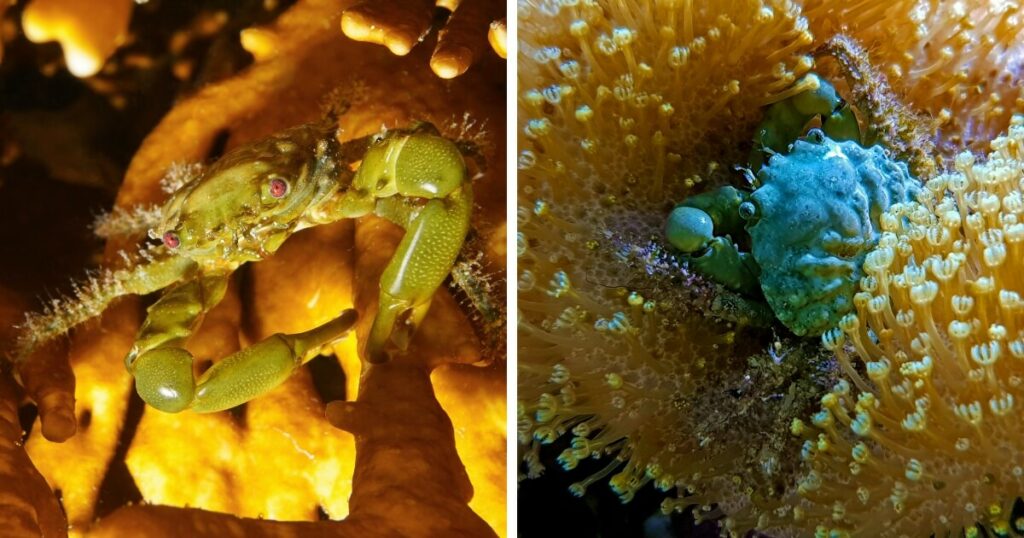
Emerald crabs are best known for their appetite for bubble algae, making them a beneficial janitorial presence in a reef tank. Be mindful that while generally reef-safe, they can sometimes nibble on small corals and frags if not well-fed.
- Reef Safe: Yes – With caution. But it’s important to monitor them for destructive behavior.
- Size: Up to 2″
- Best For: Algae control, particularly bubble algae
- Types: There is primarily one type known as the Emerald Crab (Mithraculus sculptus)
- Care Level: Beginner
Sally Lightfoot Crab
Sally Lightfoot crabs are agile scavengers, adept at cleaning up uneaten food and algae. They’re opportunistic feeders, though, and may prey on small fish or invertebrates if food is scarce.
- Reef Safe: No – They may harm small tank mates or disturb the reef structure.
- Size: Up to 5″
- Best For: Scavenging uneaten food and algae, but with risks to other inhabitants
- Types: There is primarily one type known as the Sally Lightfoot Crab (Percnon gibbesi)
- Care Level: Intermediate
Decorator Crab

There’s no mistaking Decorator crabs as they cover themselves with bits of algae, sponge, and other debris to camouflage within the reef. They feed on detritus and small organisms, aiding in tank cleanliness, but can also snip bits from soft corals for their decoration, which is ideal for your coral’s health.
- Reef Safe: With caution – They can be kept in reef tanks but may harm some corals.
- Size: Up to 4″
- Best For: Detritus removal and adding a unique aspect of natural behavior to observe
- Types: Common types include the Spotted Decorator Crab (Microphrys bicornutus) and the Kelp Decorator Crab (Pugettia producta)
- Care Level: Intermediate
Pom Pom Crab
Pom Pom crabs are notable for their peculiar habit of carrying anemones in their claws, providing both defense and a striking visual. They primarily consume detritus and leftover food, aiding in tank maintenance without causing issues for other inhabitants.
- Reef Safe: Yes – They don’t harm corals or disrupt the tank environment.
- Size: Up to 1″
- Best For: Adding character to the tank and assisting with cleanup.
- Types: The most common type is the Lybia tessellata.
- Care Level: Beginner
Coral Crabs
Coral crabs, which I often call Acropora crabs, can come as hitchhikers within the branches of stony corals. Thankfully, they have a symbiotic relationship with these corals. They feed on parasites and detritus that could otherwise harm coral health, making them beneficial tank members. They may compete with coral for food, which could be problematic if not monitored.
- Reef Safe: Yes – They live in harmony with corals, offering protection against pests.
- Size: Up to 1″
- Best For: Parasite control and enhancing coral health
- Types: Trapezia and Tetralia species are common coral crabs.
- Care Level: Intermediate
Arrow Crab
Arrow crabs, with their long, spindly legs and distinctive shape, are best known for preying on bristle worms and other pest invertebrates. They can be beneficial for controlling these pests but may also prey on small, beneficial feather dusters and slow-moving fish.
- Reef Safe: No – They may target small desirable invertebrates, fish, or certain corals.
- Size: Up to 6″
- Best For: Bristle worm control
- Types: The most common type is the Arrow Crab (Stenorhynchus seticornis)
- Care Level: Intermediate

